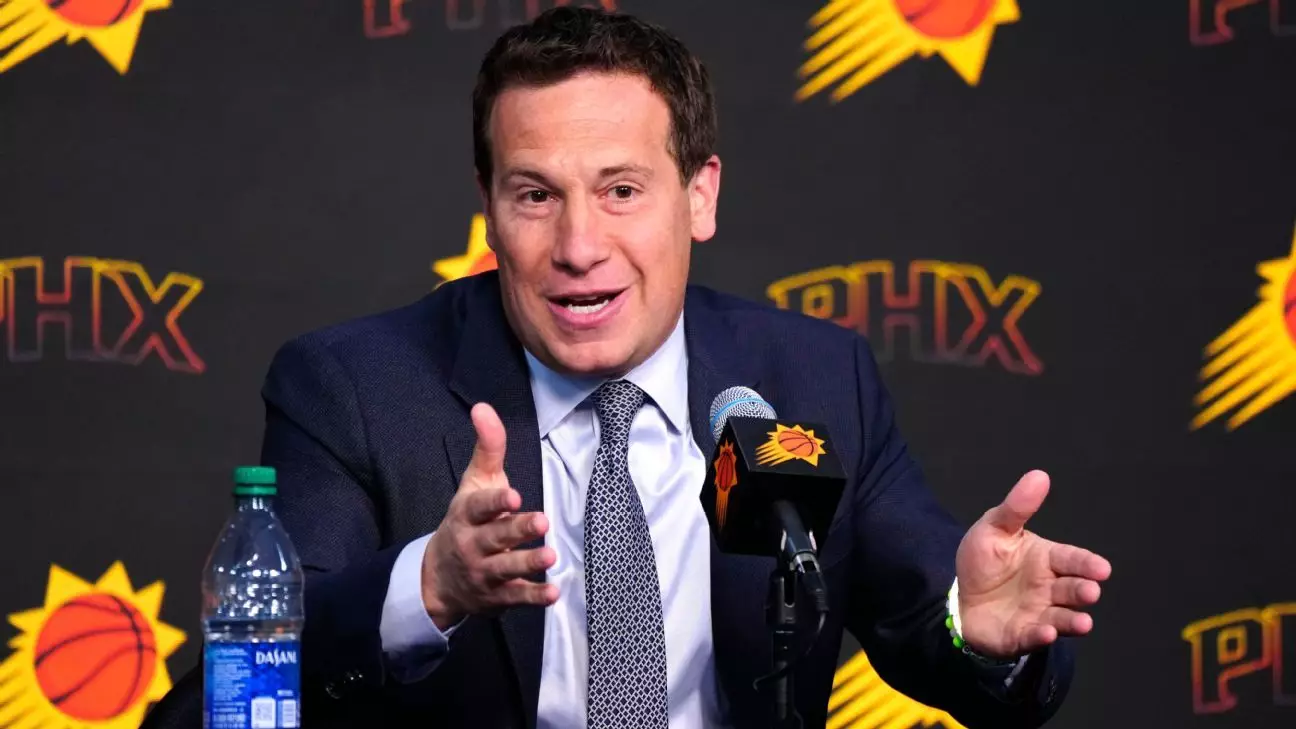The Phoenix Suns and Phoenix Mercury have taken a daring leap beyond conventional sports broadcasting norms, presenting a compelling blueprint for the future of team-driven media rights. Their decision to abandon a declining regional sports network (RSN) partnership and opt for a free over-the-air broadcast model epitomizes a bold shift driven not just by financial necessity but also by a keen understanding of audience engagement. This move exemplifies a strategic risk that, if successful, can redefine how professional sports teams approach their media rights in an era marked by cord-cutting and changing viewer habits.
The deal extension with Gray Media, valued at over $30 million annually, underscores a shift in the lucrative landscape of local media rights. Historically, teams relied heavily on regional sports networks to generate substantial revenue, but declining cable subscriptions and the rise of streaming have rendered these partnerships fragile and unpredictable. Phoenix’s active pursuit of over-the-air broadcasting signifies a disruptive strategy aimed at capturing larger audiences directly within community reach, reducing dependency on traditional cable revenue streams.
The decision also illustrates a keen understanding of the importance of accessibility. By offering free broadcasts on local channels across Arizona, the Suns and Mercury have effectively democratized access to their games. This aligns with a modern view that engaging fans at the community level is paramount for sustained growth. The move challenged industry orthodoxy, raising questions about whether other teams might follow suit to recover lost revenue and rebuild their fanbases in the wake of declining RSN deals.
Audience Engagement as a Catalyst for Revenue and Growth
What stands out most about the Suns and Mercury’s approach is the impressive resurgence of their local ratings. The Suns, in particular, doubled their viewership, transforming a struggling regional presence into a thriving local broadcast powerhouse. The Mercury experienced an even more substantial leap, with a 425% audience increase, signaling a seismic shift in fan engagement. These figures suggest that traditional media models may have underestimated the power of free, easily accessible broadcasts to reignite an emotional connection between teams and their communities.
From a strategic standpoint, this audience growth translates directly into increased sponsorship opportunities, community support, and overall team valuation. Although the deal is primarily framed as a revenue replacement, the real significance lies in establishing a more intimate and direct relationship with local viewers. As fans watch games with greater convenience and fewer barriers, their loyalty is likely to deepen, creating a more sustainable revenue ecosystem in the long term.
Furthermore, by launching Suns+ streaming and running promotions like giving away free antennas, the team demonstrates an innovative commitment to engaging diverse demographics. This proactive approach underlines an essential shift: revenue is not solely derived from traditional rights fees but also from expanding the overall fan experience and cultivating a broader base of support. This strategic pivot feeds into a virtuous cycle — greater accessibility breeds higher ratings, which attract advertisers and sponsors willing to invest in the team’s expanded audience.
Industry Implications and Future Outlook
The Suns and Mercury’s success story arrives amidst broader industry turbulence. The NBA’s overall media landscape is undergoing a fundamental transformation, with cord-cutting eroding traditional revenue sources. Notably, the league’s new $77 billion national rights deal provides stability at a macro level but does little to offset the losses from local TV deals shrinking under similar pressures.
Other teams are beginning to explore similar over-the-air or streaming options. The Utah Jazz, Charlotte Hornets, and New Orleans Pelicans are already following Phoenix’s lead, signaling a potential paradigm shift. The NBA faces a crucial crossroads: how to balance the lucrative but increasingly fragile regional TV revenues with innovative, audience-centric models that leverage free over-the-air and streaming platforms.
This transition period offers both challenge and opportunity. Teams like the Suns demonstrate that embracing this new landscape—by prioritizing accessibility and audience engagement—can not only mitigate revenue risks but also foster organic growth. The leadership of owner Mat Ishbia exemplifies this mindset, emphasizing trust in the market’s shifting dynamics and viewing this bold move as a possible blueprint for others.
Phoenix’s pioneering example underscores a fundamental truth: adapting to technological and cultural changes in media consumption is no longer optional but essential. As more NBA franchises grapple with diminishing traditional TV deals, those willing to innovate—by offering free, accessible broadcasts and engaging directly with fans—may ultimately secure a more resilient and profitable future in the evolving sports media landscape.


Leave a Reply